I found this awesome jumping spider on the faucet of the bathroom sink one morning. It was quite tiny—only about an eighth of an inch. I brought it downstairs and put it under the 100mm macro lens and three flashes with diffusers to get a bunch of photos. Extension tubes allowed closer working distance, as well as greater magnification of the tiny subject. I got a variety of good shots to draw from. This is a female spider, as can be seen by the smaller pedipalps (foot feelers).
While my kids are in karate class, I tend to do a lot of drawing from my own photos. That means I can squeeze in about 5 hours a week drawing at the dojo. It’s interesting to see the responses to the different animals I happen to be working on there. People tend to find birds, dragonflies, frogs and salamanders interesting. Spiders and snakes seem to repulse many, yet most of these animals are not only harmless but also beneficial. Spiders in particular are remarkable and interesting creatures. Many are beautiful, and a few are almost cute. Jumping spiders seem to be very catlike, sneaking up and pouncing on their prey. Maybe they should get the felines’ public relations firm to work on their image? Here in Michigan the only spiders that can spoil your day are the brown recluse and black widow. Both are seldom encountered in our state.
Anyone interested in the natural world should really take the time to watch spiders for a while. They are fantastic designers and architects. Seeing an orb weaver build a web is one of the most fascinating things you can imagine. Following a jumping spider around for a 15 minutes would probably change many people’s perspective. They are truly incredible athletes, able to jump impressive distances in the blink of an eye. They are also masters of patience and stealth. The dramatics of their hunting probably rivals anything on the African plains, yet it’s happening in your own back yard every summer day!
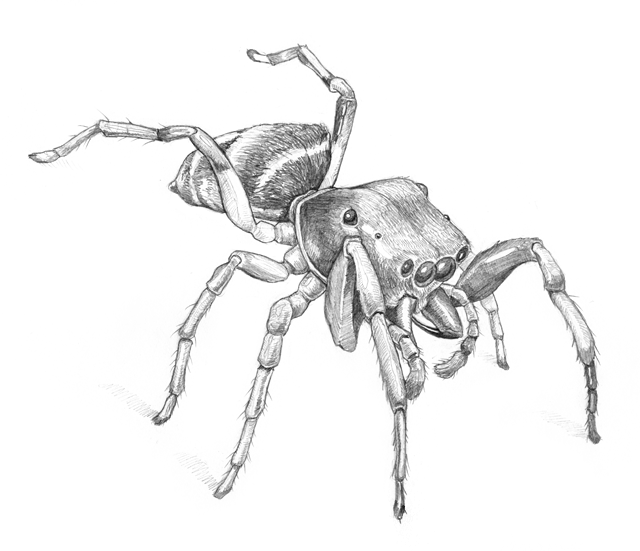


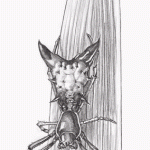
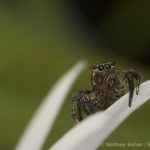
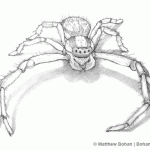
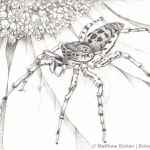
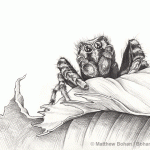
Sam
Matt,
Really excellent drawing and great comments about spiders. Keep up the good work.
Matt
Thanks Sam! More spiders coming soon. The next is the “Daring Jumping Spider!”
Bryan Eelhart
Matt,
Could I use this image for an event poster?
http://www.fields.utoronto.ca/activities/17-18/sneyd
Speaker:
James Sneyd, University of Auckland
Date and Time:
Monday, September 11, 2017 – 5:00pm to 6:00pm
Location:
Fields Institute, Room 230
Abstract:
For hundreds of years, mathematics has had a close connection with the biological sciences, and with physiology in particular. Indeed, some of the most famous equations in applied mathematics were originally motivated by physiological problems, such as the flow of blood in blood vessels. In this lecture I shall look briefly at some famous examples of how mathematics has been used to study physiological problems, including Bernoulli’s smallpox model from 1765, mathematical models of the cochlea from Helmholtz to Hudspeth, and the propagation of action potentials in neurons. I’ll end with a brief look at some modern applications of mathematics to physiology, and show how physiology continues to inspire and direct new mathematical investigations.
Biography:
James Sneyd was born and bred in Dunedin, New Zealand, where he did a BSc in Mathematics and Chemistry (and Classical Studies, as it happens, but that wasn’t part of the BSc). From there he went to New York University where he did his PhD in mathematical biology, and then went to a series of jobs at Oxford University, University of California (Los Angeles), University of Canterbury, the University of Michigan, and Massey University, before finally ending up at the University of Auckland, New Zealand, where he is currently a professor in the Department of Mathematics.
Matt
Thanks for asking, James. I’ll send you a private email separately to respond.